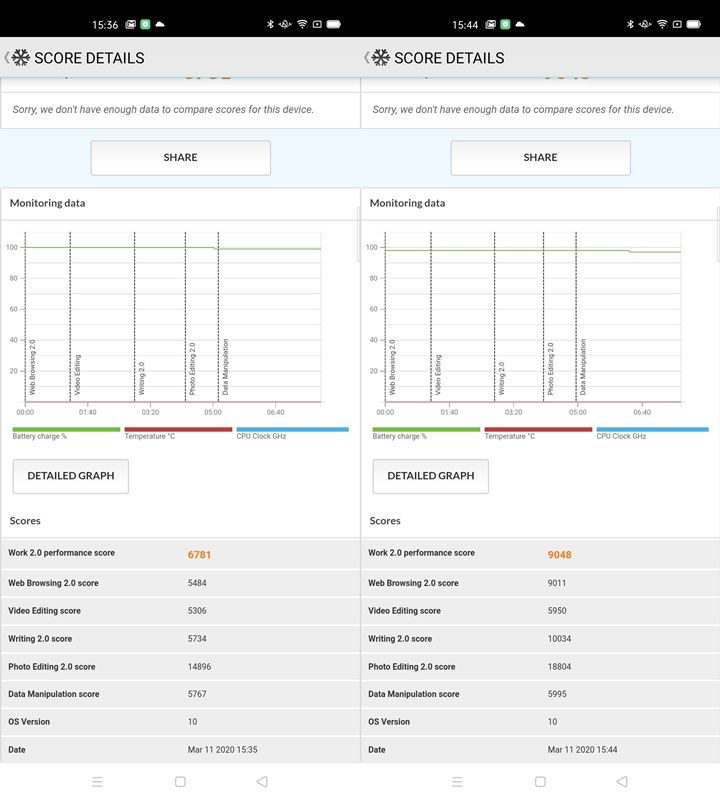Evidence of the Taiwan-based company’s actions was discovered when the popular tech site, Anandtech, was testing a European version of Oppo’s Reno3 Pro smartphone. For clarity, this version of the phone runs on MediaTek’s Helio P95 SoC, while its Chinese counterpart runs on a Qualcomm Snapdragon 765G 5G SoC. It wasn’t the Anandtech writer received a version of the Reno3 Pro running on the MediaTek Dimensity 1000L that he began suspecting something was amuck. By that, we mean that the Helio P95 was outperforming the Dimensity 1000L and leaving it in the dust. Curious at this development, he reached out to some people at UL for an anonymised version of the company’s mobile version of PCMark. The test on version of the Reno3 Pro running on the Helio P95. This was where he discovered the cheating; the anonymised PCMark revealed that MediaTek, through some shifty coding, was able to alter the overall and subtests scores by as much as 30% and 75% from its actual performance value, respectively. Even more shocking is that MediaTek’s shifty “_whitelist_cfg.xml” code isn’t just limited to the Reno3 Pro. Through a little bit of digging, the writer also found the coding present in other MediaTek-powered devices, including the Oppo Reno Z, Oppo F15, Xiaomi Note 8 Pro, and the Sony XA1. The latter being a device that launched back in 2016.
When AnandTech reached out to MediaTek, the latter responded with a boilerplate response. Saying that it has adhered to the accepted industry standards and that the full capabilities of its chipset in benchmarking tests are in line with the practices of other companies. (Source: AnandTech)

